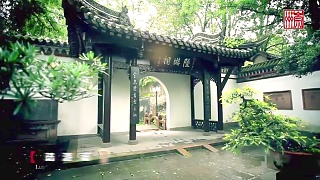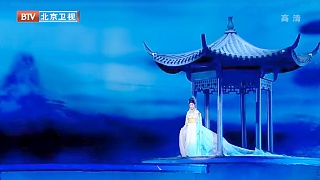
|
Video by Beijing Old Liu ...
YeLang Valley, located in GuiZhou province, China, is a unique cultural and artistic site known for its extensive collection of outdoor sculptures and art installations. This valley, often referred to as a “land of imagination,” showcases the creativity and vision of local artists, particularly the works of artist Song Peilun. Here's a detailed look at the sculptures in Yelang Valley and nearby art places:
### Yelang Valley Sculptures
1. **Artist Song Peilun**: Yelang Valley is the brainchild of Song Peilun, an artist and former professor at the Central Academy of Fine Arts. He began creating this art paradise in the 1990s, transforming the valley into a sprawling outdoor gallery.
2. **Eclectic Sculptures**: The valley features a wide array of sculptures made from various materials, including stone, wood, and metal. The artworks blend elements of traditional Chinese culture, mythology, and contemporary art.
3. **Symbolism and Themes**: Many of the sculptures in Yelang Valley are infused with symbolic meaning, drawing on themes from Chinese folklore, nature, and spirituality. Common motifs include dragons, phoenixes, mythical creatures, and representations of ancient legends.
4. **Integration with Nature**: The sculptures are designed to harmonize with the natural landscape of the valley. The placement of each piece is carefully considered to complement the surrounding environment, creating a seamless blend of art and nature.
5. **Interactive Art**: Some installations in Yelang Valley are interactive, allowing visitors to engage with the art in a hands-on way. This interactive approach helps to create a more immersive and personal experience for visitors.
### Nearby Art Places in Guizhou
1. **Guiyang Art Museum**: Located in the provincial capital, Guiyang, this museum offers a diverse collection of contemporary and traditional Chinese art. It regularly hosts exhibitions featuring works by local and national artists.
2. **Qingyan Ancient Town**: This well-preserved ancient town near Guiyang is not only a historical site but also a cultural hub. It features traditional architecture, artisan shops, and studios where local craftsmen create and sell their works.
3. **Xijiang Qianhu Miao Village**: Known as the largest Miao ethnic village in China, Xijiang offers visitors a deep dive into the rich cultural traditions of the Miao people. The village showcases traditional Miao handicrafts, textiles, and silver jewelry, often considered forms of art.
4. **Danzhai Wanda Village**: A cultural tourism village that combines traditional Miao architecture with modern amenities. It includes art installations and spaces where visitors can learn about and purchase local crafts.
### Art and Cultural Festivals
1. **Guizhou Art Festival**: Held annually, this festival showcases a wide range of artistic expressions, including visual arts, music, dance, and theater. It attracts artists from across China and beyond, offering a platform for cultural exchange and creativity.
2. **Miao New Year Festival**: This traditional festival, celebrated by the Miao people, includes elaborate costumes, dance performances, and traditional music. The festival is an excellent opportunity to witness the living art and cultural heritage of the Miao ethnic group.
### Conclusion
Yelang Valley in Guizhou is a testament to the transformative power of art, with its stunning outdoor sculptures and installations that blend seamlessly with the natural landscape. The nearby art places and cultural sites further enrich the region's artistic and cultural tapestry, making it a fascinating destination for art lovers and cultural enthusiasts. Whether exploring the imaginative sculptures of Yelang Valley, visiting the Guiyang Art Museum, or experiencing the traditional crafts of the Miao people, visitors are sure to find inspiration and beauty in Guizhou’s vibrant art scene.
BanQiao Art Village is an innovative and dynamic cultural and artistic hub located in GuiZhou province, China. Known for its vibrant community of artists and creative spaces, the village offers visitors a unique opportunity to explore contemporary art and engage with local artists. Here’s an overview of Banqiao Art Village:
### Overview of Banqiao Art Village
1. **Location**: Banqiao Art Village is situated in the outskirts of Guiyang, the capital city of Guizhou Province. It is easily accessible from the city, making it a popular destination for both locals and tourists.
2. **History**: The art village was established to provide a dedicated space for artists to live, work, and showcase their creations. It has grown over the years into a vibrant artistic community that attracts creative minds from across China and beyond.
### Artistic Features and Attractions
1. **Artist Studios**: The village is home to numerous artist studios where visitors can see artists at work. These studios often welcome visitors to observe the creative process and engage with the artists.
2. **Galleries and Exhibitions**: Banqiao Art Village hosts a variety of galleries that display contemporary art, traditional Chinese art, sculptures, and mixed media works. Regular exhibitions are held to showcase the latest works by resident and visiting artists.
3. **Public Art Installations**: Throughout the village, you will find public art installations and sculptures that add to the artistic ambiance of the area. These installations often reflect the cultural heritage and modern creativity of Guizhou.
4. **Workshops and Classes**: The village offers art workshops and classes for visitors of all ages. These sessions cover a range of artistic techniques and mediums, providing hands-on experiences in painting, pottery, sculpture, and more.
5. **Cultural Events**: Banqiao Art Village regularly hosts cultural events, including art fairs, music festivals, and performance arts. These events bring the community together and attract visitors looking to immerse themselves in the local art scene.
### Community and Lifestyle
1. **Artist Residencies**: The village provides residency programs for artists, allowing them to live and work in a supportive and inspiring environment. These residencies foster collaboration and cultural exchange among artists.
2. **Cafes and Shops**: The village features several cafes, restaurants, and shops where visitors can relax, enjoy local cuisine, and purchase unique handmade art and crafts.
3. **Eco-Friendly Practices**: Banqiao Art Village emphasizes sustainability and eco-friendly practices. Many of the buildings are constructed using traditional techniques and sustainable materials, blending seamlessly with the natural surroundings.
### Nearby Attractions
1. **Qingyan Ancient Town**: A short drive from Banqiao Art Village, Qingyan Ancient Town offers a historical and cultural experience with its well-preserved Ming and Qing dynasty architecture, ancient temples, and traditional shops.
2. **Guiyang Art Museum**: Located in the heart of Guiyang, the museum features a diverse collection of contemporary and traditional Chinese art, making it a perfect complement to the contemporary focus of Banqiao Art Village.
### Visitor Tips
1. **Plan Ahead**: Check the village’s event calendar before your visit to catch any special exhibitions, workshops, or festivals.
2. **Engage with Artists**: Don’t hesitate to interact with the artists. Many are happy to share insights into their work and creative processes.
3. **Support Local Art**: Consider purchasing artwork or crafts as souvenirs. This not only supports the artists but also provides you with a unique piece of Guizhou’s artistic culture.
### Conclusion
Banqiao Art Village is a thriving center for contemporary art and cultural exchange in Guizhou Province. Its combination of artist studios, galleries, public art, and cultural events makes it a must-visit destination for art enthusiasts. Whether you’re looking to appreciate modern art, participate in workshops, or simply enjoy the creative atmosphere, Banqiao Art Village offers a rich and engaging experience.
|





 First time in China – GuiLin, GuangXi province
First time in China – GuiLin, GuangXi province














